With a distinctive visual language that included signs, symbology and wording, Keith Haring and Jean-Michel Basquiat changed the art world forever. The artists, two of the the very best to emerge from New York City in the 1980s, being able to convey social and political messages in an unconventional manner, their idiosyncratic imagery and radical ideas cementing a legacy that makes them not only two of the most influential artists of the ’80s, but of all time.
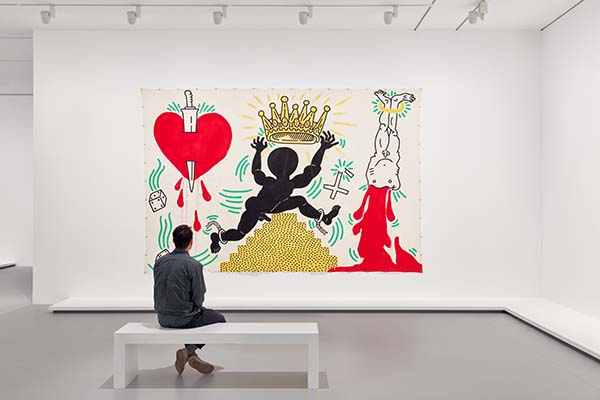
Installation view of Keith Haring’s Prophets of Rage, 1988 inside Keith Haring | Jean-Michel Basquiat: Crossing Lines at NGV International © Estate of Jean-Michel Basquiat. Licensed by Artestar, New York
© Keith Haring Foundation. Photo, Tom Ross
Profiling their short yet fruitful careers, this exhaustive exhibition at Melbourne‘s National Gallery of Victoria—Keith Haring | Jean-Michel Basquiat: Crossing Lines—features in excess of 200 artworks, including works created in public spaces; painting; sculpture; objects and ephemera; works on paper; and photographs. The unprecedented, world premiere exhibition offering a staggering new insight into the duo’s unique aesthetics and the intersections between both their personal lives and artistic practices.
Curated by art historian Dr Dieter Buchhart, the exhibition is on show until 13 April 2020, and begins with examples of Haring’s and Basquiat’s work from the streets and subway stations of New York City; highlighting early collaborations and documenting each artist’s breakthrough gallery shows, alongside their most acclaimed works, such as Haring’s iconic ‘radiant baby’ and dancing figures, alongside Basquiat’s inimitable crown and head motifs.
“While Basquiat anticipated today’s ‘always-on’ culture of communication and contemporary knowledge spaces, Haring foreshadowed emojis with his image-word alphabet,” explains Buchhart. “This universal system of communication remains a positive, humanistic meme in the collective struggle against ignorance, fear and silence.”
More relevant today than ever, particularly so given the pair’s powerful battles against prejudice and oppression, Keith Haring | Jean-Michel Basquiat: Crossing Lines collates the work of, and portrays the effervescent personalities of two of the art world’s all time greats; a monumental exhibition testament to monumental legacies.
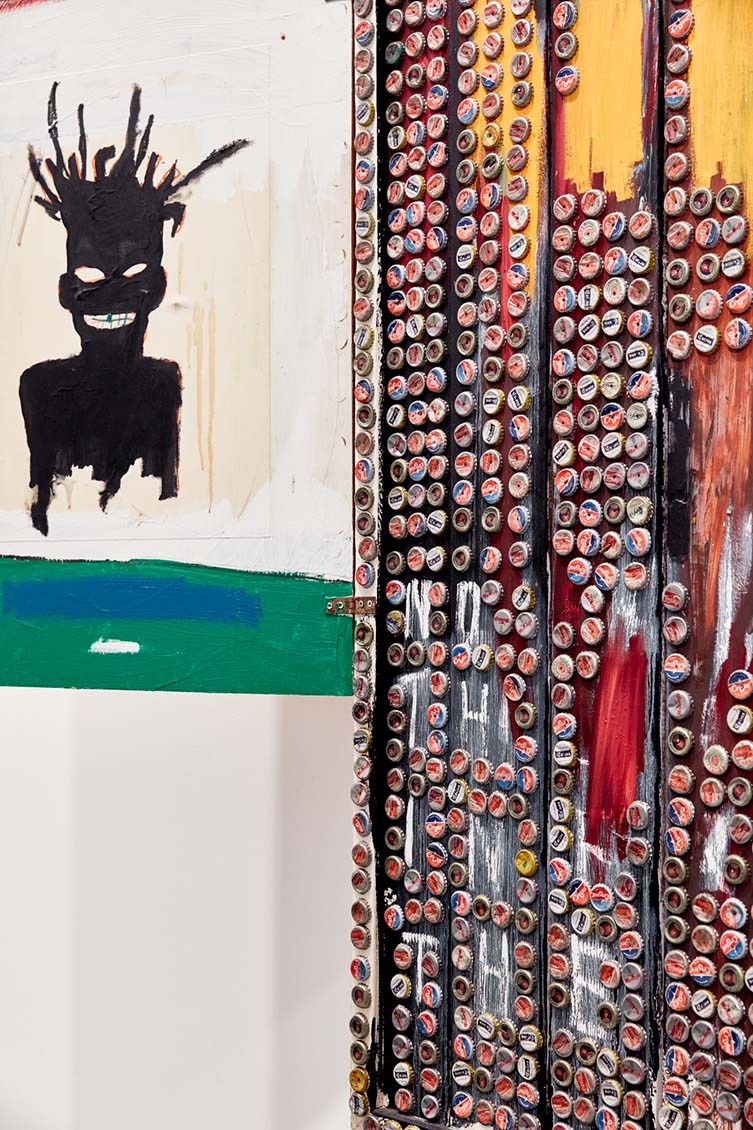
Installation view of Jean-Michel Basquiat’s Self Portrait, 1985 inside Keith Haring | Jean-Michel Basquiat: Crossing Lines at NGV International © Estate of Jean-Michel Basquiat. Licensed by Artestar, New York © Keith Haring Foundation. Photo, Tom Ross.
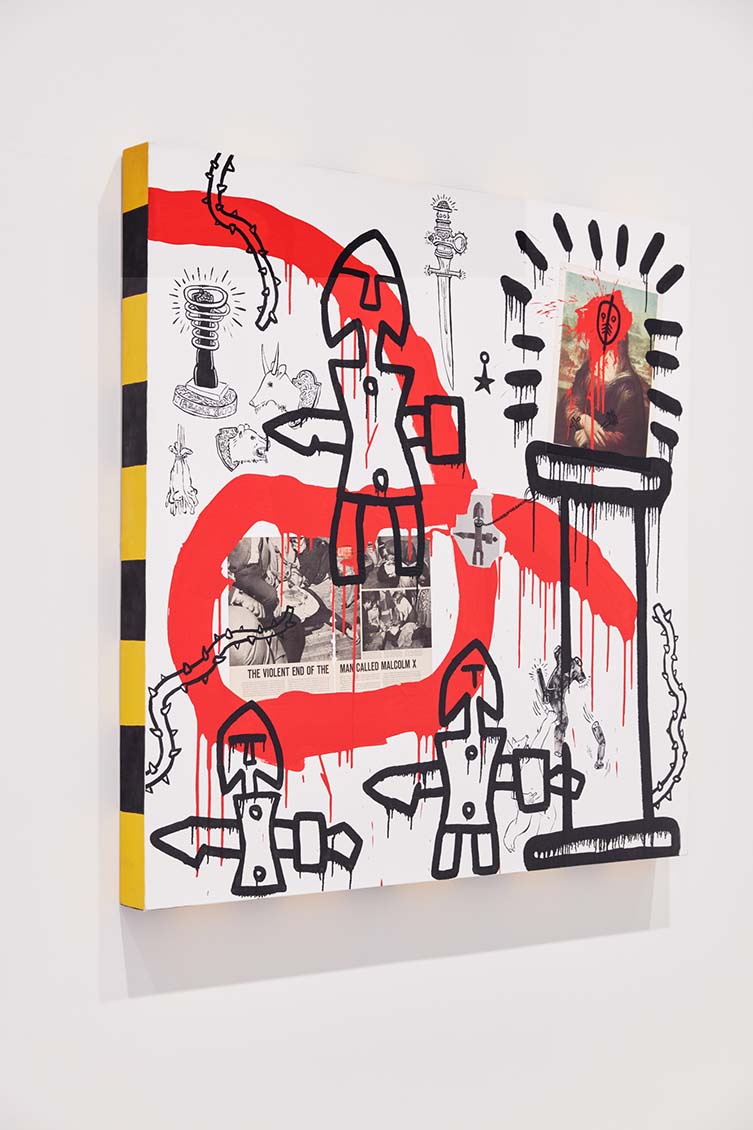
Installation view of Keith Haring’s Malcolm X, 1988 inside Keith Haring | Jean-Michel Basquiat: Crossing Lines at NGV International © Estate of Jean-Michel Basquiat. Licensed by Artestar, New York © Keith Haring Foundation. Photo, Tom Ross.
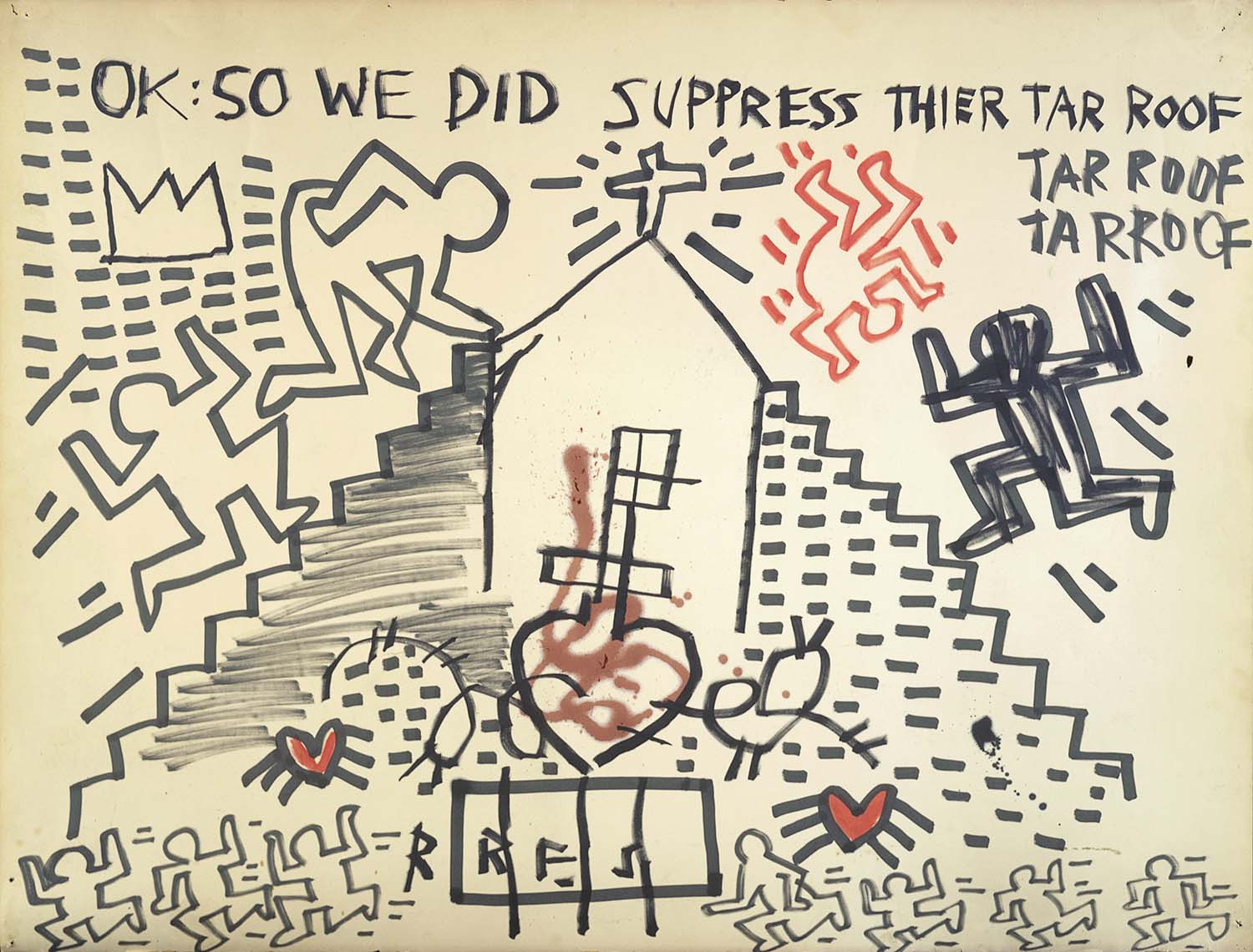
Keith Haring and Jean-Michel Basquiat, Untitled 1980
red and black marker on paper, 96.5 x 127.0 cm
Private collection © Keith Haring Foundation
© Estate of Jean-Michel Basquiat. Licensed by Artestar, New York
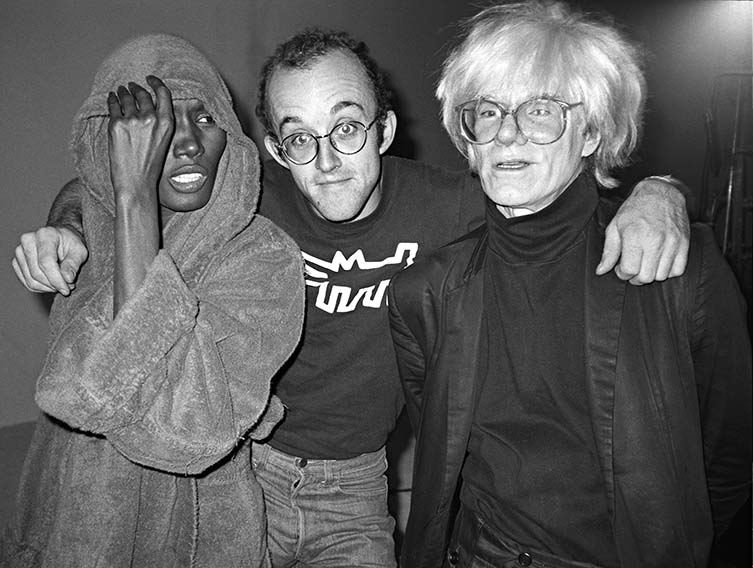
Grace Jones, Keith Haring, Andy Warhol at Paradise Garage, New York, 1983. Photo, Tseng Kwong Chi © Muna Tseng Dance Projects.

Jean-Michel Basquiat in his studio at the Annina Nosei Gallery, May, 1982. Photo © Marion Busch
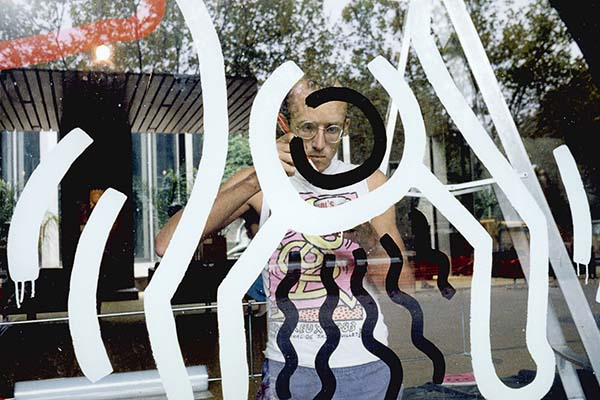
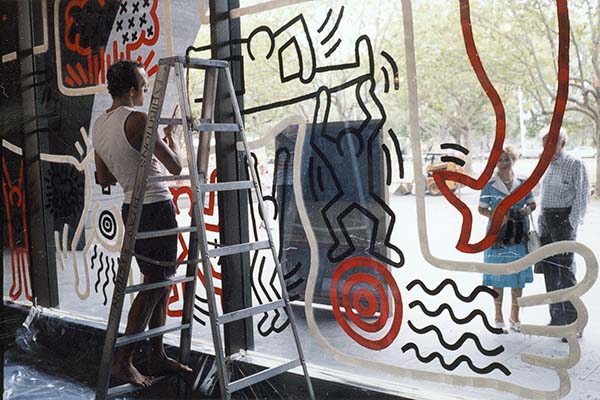
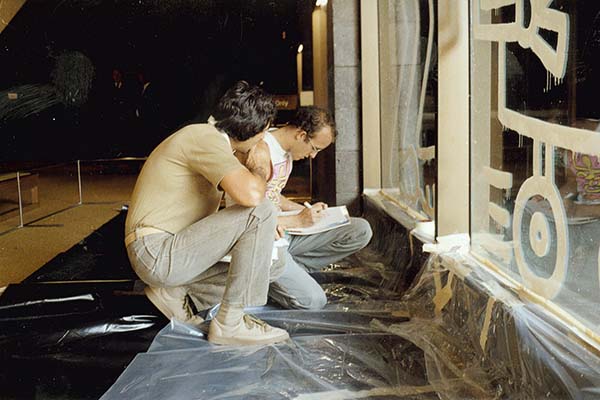
Keith Haring preparing an artwork on the Waterwall at the NGV, 1984
Photographs, Geoffrey Burke
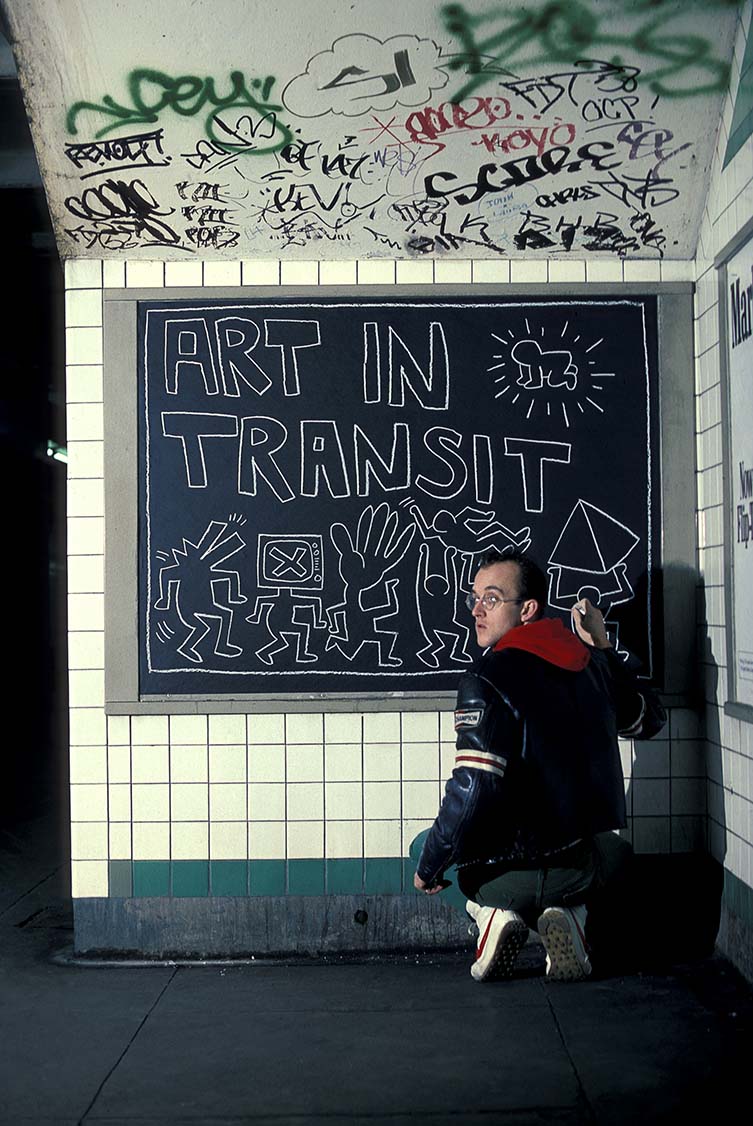
Keith Haring in New York City Subway, New York, 1984
Photograph: Tseng Kwong Chi © Muna Tseng Dance Projects
Art © Keith Haring Foundation

Grace Jones body painted by Keith Haring, New York, 1985
Photograph: Tseng Kwong Chi © Muna Tseng Dance Projects
Art © Keith Haring Foundation
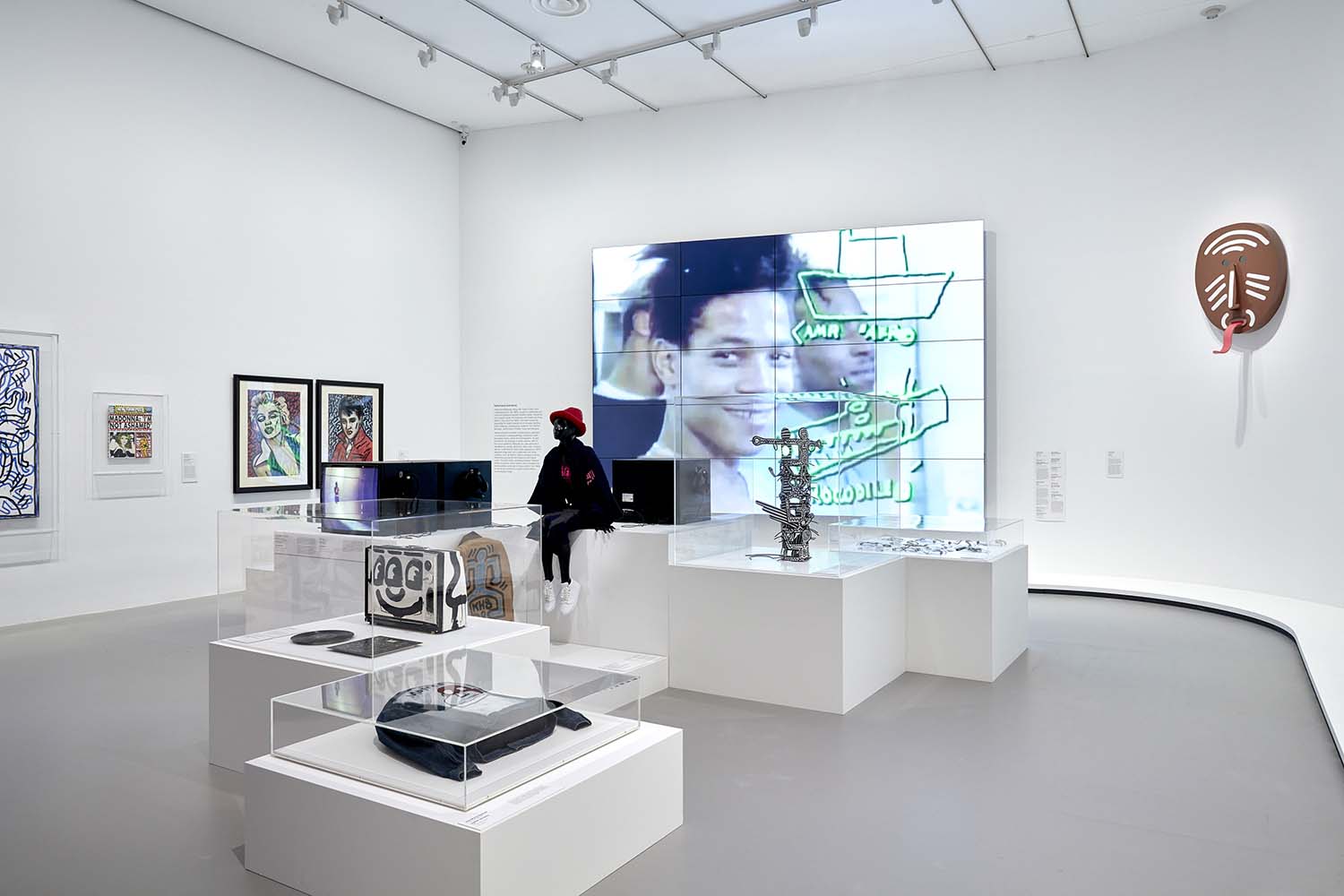
Installation view of Keith Haring | Jean-Michel Basquiat: Crossing Lines at NGV International,
© Estate of Jean-Michel Basquiat. Licensed by Artestar, New York
© Keith Haring Foundation. Photo, Sean Fennessy.
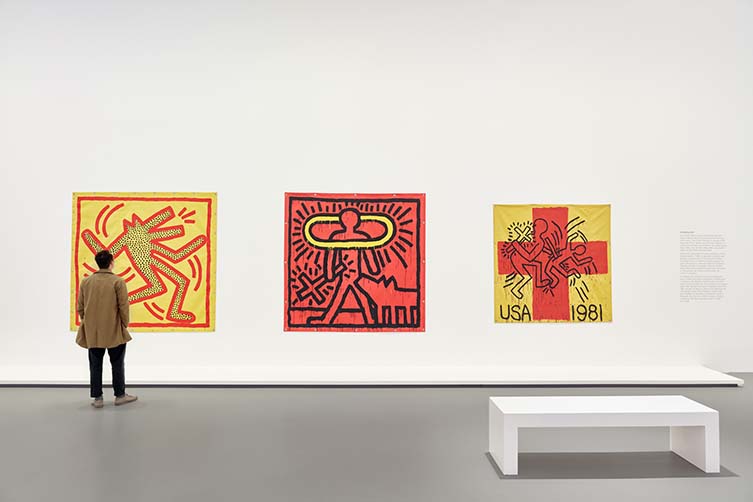
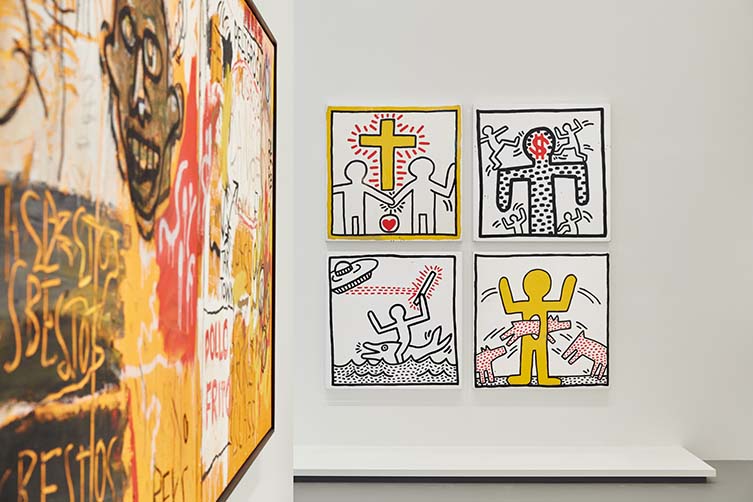
Installation views of Keith Haring | Jean-Michel Basquiat: Crossing Lines at NGV International,
© Estate of Jean-Michel Basquiat. Licensed by Artestar, New York
© Keith Haring Foundation. Photography, Tom Ross.
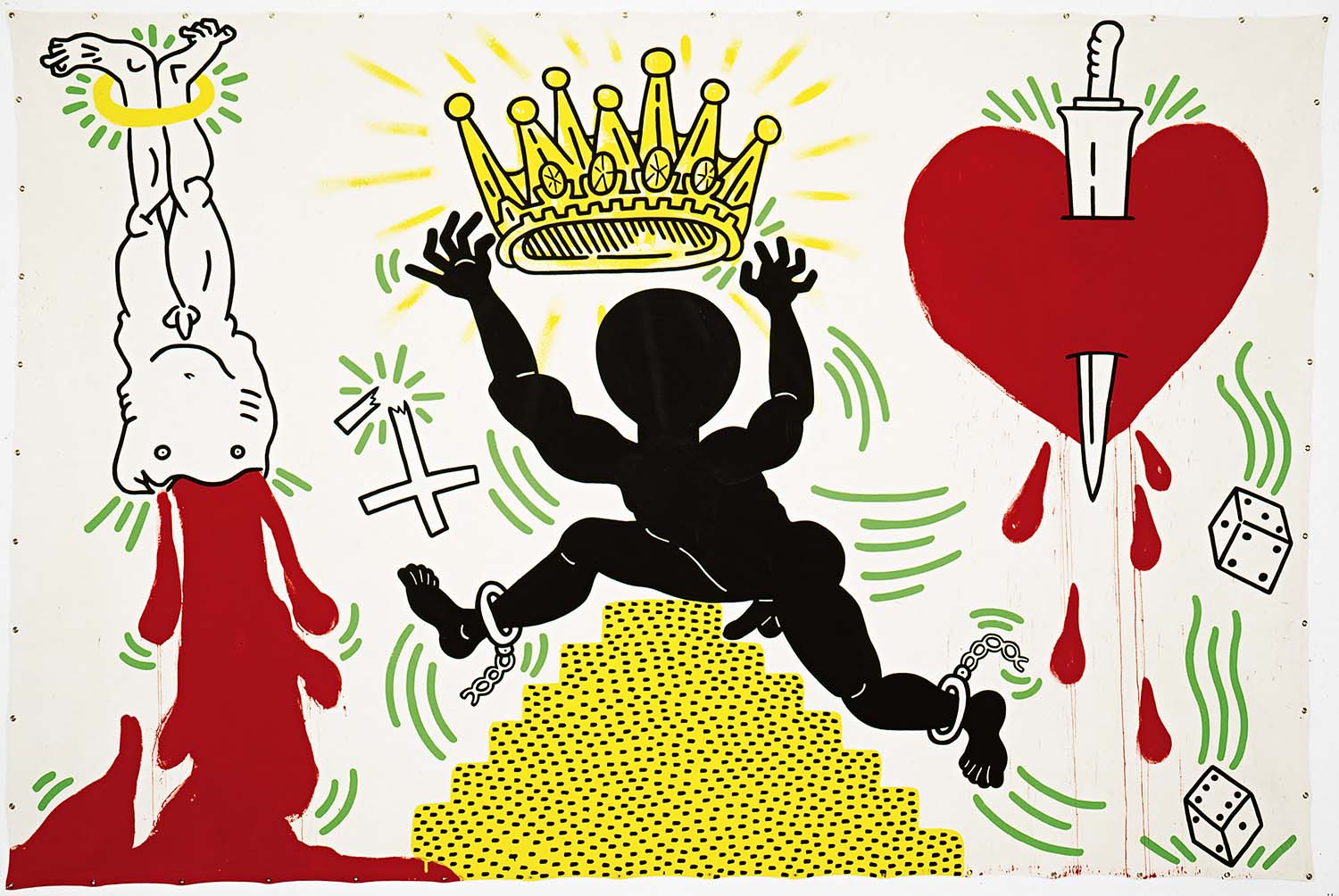
Keith Haring, Prophets of Rage 1988
synthetic polymer paint on canvas 304.8 x 457.2 cm
The Keith Haring Foundation, New York © Keith Haring Foundation
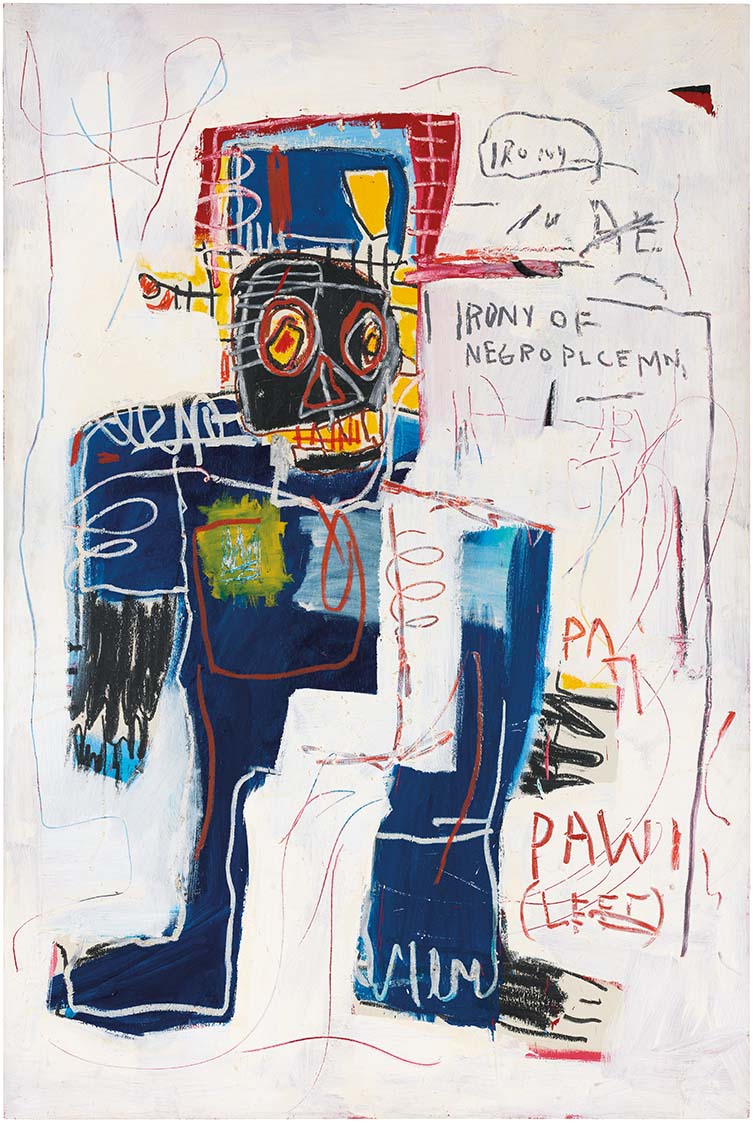
Jean-Michel Basquiat, Irony of a Negro Policeman 1981
synthetic polymer paint and oilstick on wood, 183.0 x 122.0 cm
Private collection © Estate of Jean-Michel Basquiat.
Licensed by Artestar, New York
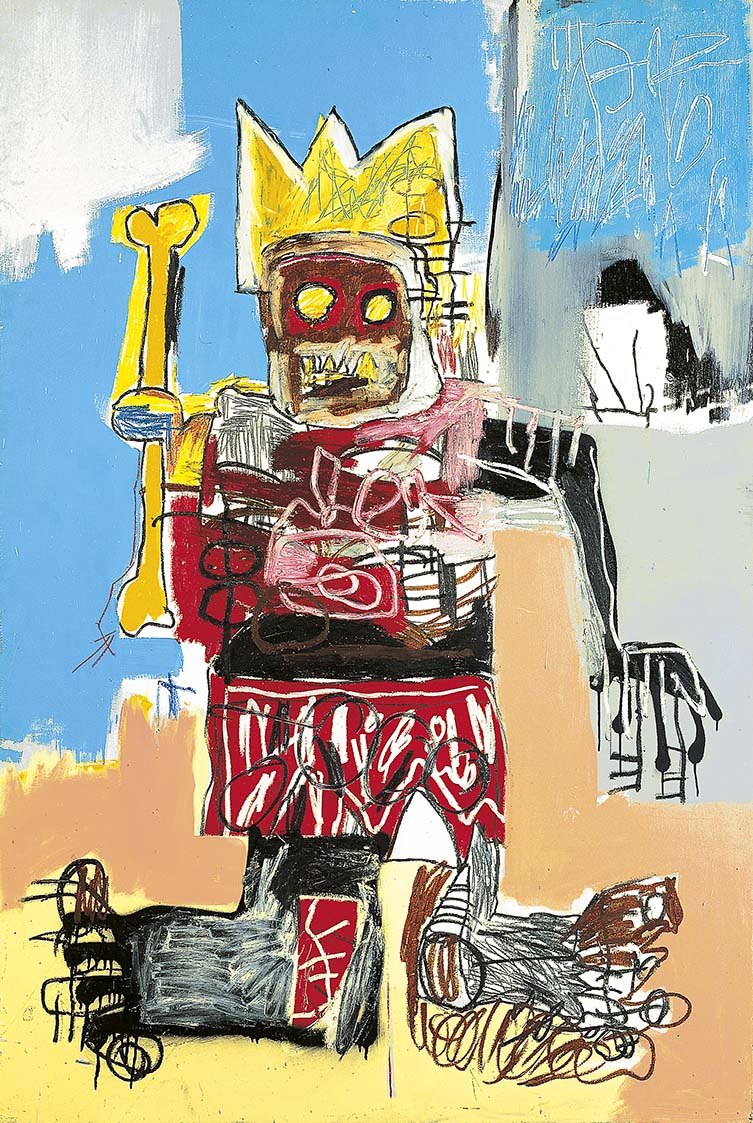
Jean-Michel Basquiat, Untitled 1982
acrylic and oilstick on wood panel, 183.0 x 122.5 cm
Private collection © Estate of Jean-Michel Basquiat.
Licensed by Artestar, New York
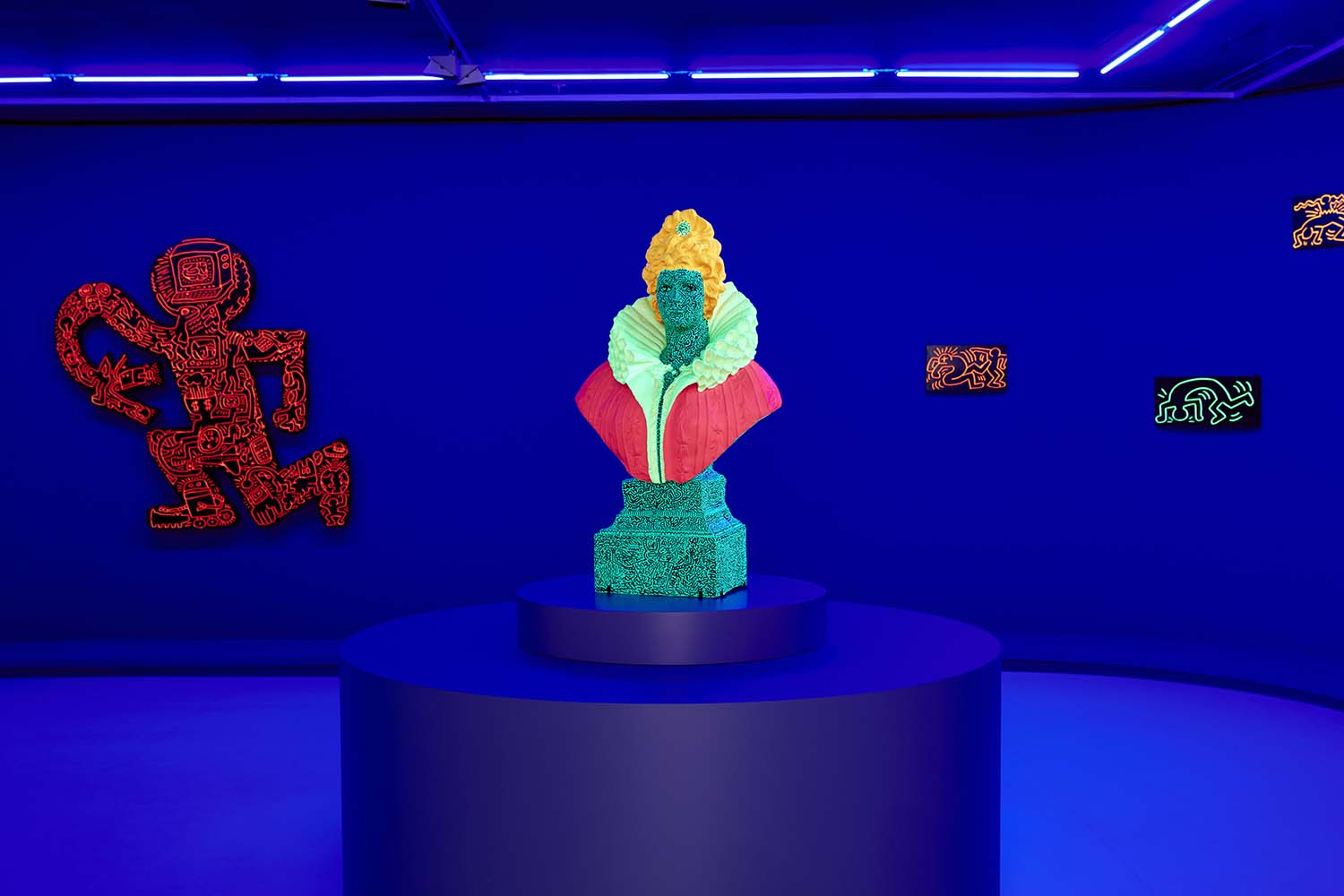
Installation view of Keith Haring | Jean-Michel Basquiat: Crossing Lines at NGV International,
© Estate of Jean-Michel Basquiat. Licensed by Artestar, New York
© Keith Haring Foundation. Photo, Sean Fennessy
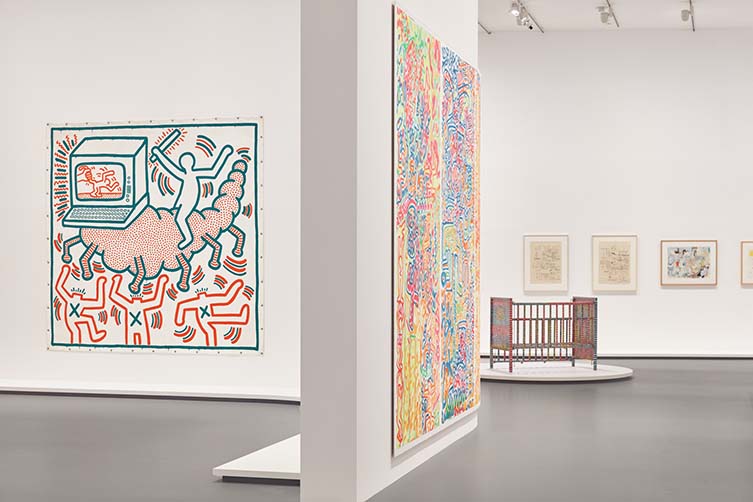
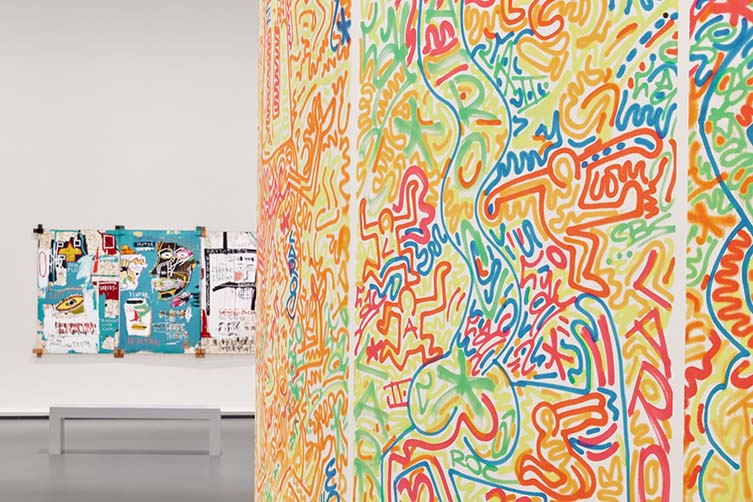
Installation views of Keith Haring | Jean-Michel Basquiat: Crossing Lines at NGV International,
© Estate of Jean-Michel Basquiat. Licensed by Artestar, New York
© Keith Haring Foundation. Photography, Tom Ross.

Madonna, Keith Haring, New York, 1985
Photograph: Tseng Kwong Chi © Muna Tseng Dance Projects
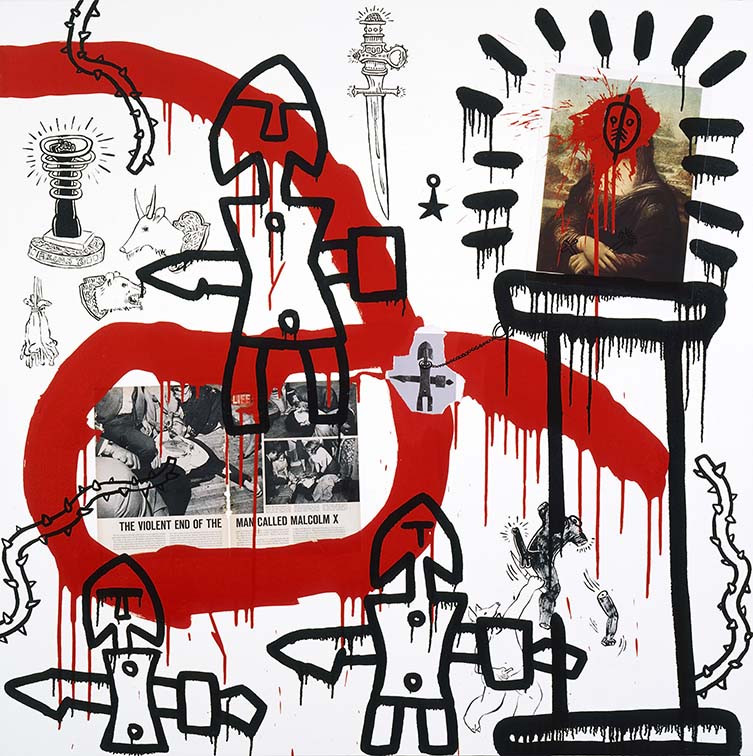
Keith Haring, Malcolm X 1988
synthetic polymer paint, enamel and collage on canvas
152.4 x 152.4 cm, Private collection
© Keith Haring Foundation
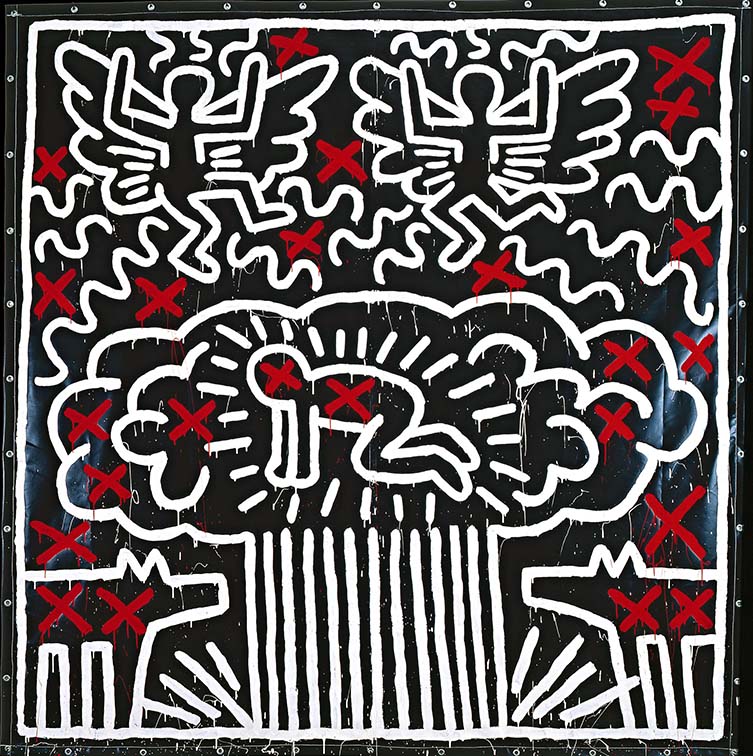
Keith Haring, Untitled 1982
acrylic on vinyl tarpaulin with metal grommets
308.6 x 301.6 cm, Private collection
© Keith Haring Foundation




